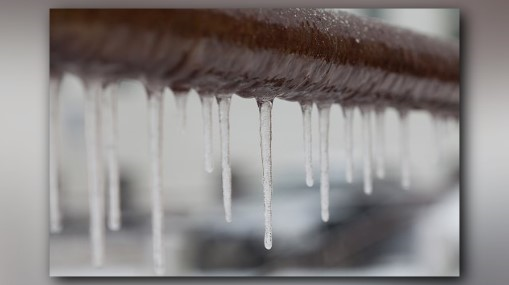Tips to Defend Plumbing System from Cold Weather: Critical Strategies
Tips to Defend Plumbing System from Cold Weather: Critical Strategies
Blog Article
Here down the page you might get a lot of first-rate ideas with regards to How To Avoid Freezing Pipes.

Winter can wreak havoc on your plumbing, specifically by freezing pipes. Below's how to avoid it from happening and what to do if it does.
Intro
As temperatures decline, the threat of frozen pipelines boosts, possibly causing expensive repairs and water damage. Understanding exactly how to avoid icy pipelines is essential for house owners in cold climates.
Understanding Icy Pipelines
What creates pipes to freeze?
Pipes ice up when subjected to temperature levels listed below 32 ° F (0 ° C) for extended periods. As water inside the pipelines freezes, it broadens, taxing the pipeline wall surfaces and possibly creating them to burst.
Threats and damages
Frozen pipes can lead to supply of water disturbances, residential or commercial property damage, and costly fixings. Burst pipes can flooding homes and trigger substantial architectural damages.
Signs of Frozen Water Lines
Identifying frozen pipes early can avoid them from bursting.
Exactly how to identify icy pipelines
Try to find reduced water circulation from taps, uncommon odors or noises from pipelines, and visible frost on exposed pipes.
Avoidance Tips
Insulating at risk pipelines
Wrap pipelines in insulation sleeves or use heat tape to secure them from freezing temperatures. Concentrate on pipes in unheated or external areas of the home.
Heating strategies
Keep interior areas effectively heated up, specifically areas with pipes. Open cabinet doors to allow cozy air to flow around pipelines under sinks.
Protecting Exterior Pipes
Yard hose pipes and outdoor faucets
Detach and drain pipes yard hose pipes prior to winter. Mount frost-proof spigots or cover outdoor faucets with insulated caps.
What to Do If Your Pipes Freeze
Immediate activities to take
If you suspect icy pipelines, keep taps open to ease stress as the ice thaws. Make use of a hairdryer or towels soaked in warm water to thaw pipes slowly.
Long-Term Solutions
Structural changes
Take into consideration rerouting pipes far from exterior walls or unheated areas. Add added insulation to attic rooms, cellars, and crawl spaces.
Upgrading insulation
Buy top quality insulation for pipes, attic rooms, and walls. Proper insulation helps preserve constant temperatures and minimizes the threat of frozen pipes.
Conclusion
Protecting against frozen pipes requires positive actions and fast reactions. By comprehending the reasons, signs, and safety nets, house owners can secure their pipes during winter.
5 Ways to Prevent Frozen Pipes
Drain Outdoor Faucets and Disconnect Hoses
First, close the shut-off valve that controls the flow of water in the pipe to your outdoor faucet. Then, head outside to disconnect and drain your hose and open the outdoor faucet to allow the water to completely drain out of the line. Turn off the faucet when done. Finally, head back to the shut-off valve and drain the remaining water inside the pipe into a bucket or container. Additionally, if you have a home irrigation system, you should consider hiring an expert to clear the system of water each year.
Insulate Pipes
One of the best and most cost-effective methods for preventing frozen water pipes is to wrap your pipes with insulation. This is especially important for areas in your home that aren’t exposed to heat, such as an attic. We suggest using foam sleeves, which can typically be found at your local hardware store.
Keep Heat Running at 65
Your pipes are located inside your walls, and the temperature there is much colder than the rest of the house. To prevent your pipes from freezing, The Insurance Information Institute suggests that you keep your home heated to at least 65 degrees, even when traveling. You may want to invest in smart devices that can keep an eye on the temperature in your home while you’re away.
Leave Water Dripping
Moving water — even a small trickle — can prevent ice from forming inside your pipes. When freezing temps are imminent, start a drip of water from all faucets that serve exposed pipes. Leaving a few faucets running will also help relieve pressure inside the pipes and help prevent a rupture if the water inside freezes.
Open Cupboard Doors
Warm your kitchen and bathroom pipes by opening cupboards and vanities. You should also leave your interior doors ajar to help warm air circulate evenly throughout your home.
:strip_icc()/snow-outdoor-faucet-pipes-4af65d1e5e904fb1aa7bf74071fe5d89.jpg)
Hopefully you liked our piece on Helpful Tips to Prevent Frozen Pipes this Winter. Thanks so much for taking time to read through our blog post. For those who appreciated our blog post please make sure you remember to share it. Thank you so much for your time invested reading it.
Estimate Report this page